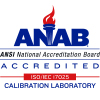When starting a data logger, there may be up to three Start Methods available: Start Now, Delay Start, and Manual Start. These options will appear on the Start Device screen.
Start Now will program the logger to start recording immediately. This is the default option. To set the logger for an immediate start, click the Start Now radio button on the Start Device screen.
Delay Start allows the unit to be programmed to start logging at a specific date and time. To set the logger for a delayed start, click the Delay Start radio button on the Start Device screen. Next adjust the Date and Time using the dropdown boxes to the right. Note: It is recommended that users double-check all settings in the Start Device window before starting the device, to ensure that the device will be configured as needed.
Manual Start is an option supported by loggers with a pushbutton start control on the logger itself. To set the logger for a pushbutton start, click the Manual Start radio button on the Start Device screen. The logger will be programmed to start, but will not begin logging until the pushbutton is used to start the device. Please refer to the Product Information Card for you logger for the proper manual start procedure. For example: with the 101A series first program the device for a Manual Start, and to begin logging press and hold the pushbutton for 5 seconds. The green LED will flash during this time, when the green LED stops flashing, the device has started logging.
There may be up to three Stop Methods available: Manual, Timed, and Readings.
A Manual Stop typically means the device will not stop until using the Stop Device function within the graphing software. However, some devices equipped with a pushbutton start control also allow for a pushbutton stop, if Manual Start and Manual Stop are both selected. Please refer to the product’s Specification Sheet to determine if the logger supports pushbutton start and stop. Click the Manual radio button to set the logger to be stopped manually by the software or pushbutton.
A Timed Stop allows the user to program in a specific date and time for the logger to stop recording. Click the Timed radio button, and then adjust the time and date in the selection boxes to the right to set a Timed Stop.
A Readings Stop allows the user to set the logger to stop recording after it has logged a specific number of readings. To set the logger to stop after logging a certain number of readings, click the Readings radio button and then enter the number of readings into the selection box to the right.
After setting the desired Reading Rate, press the Start button to begin logging. Note: The “Status” column in the Connected Devices panel will change to say “Running”, “Waiting to Start”, “Waiting for Manual Start” or “Waiting for Trigger” if the device has been configured successfully.






